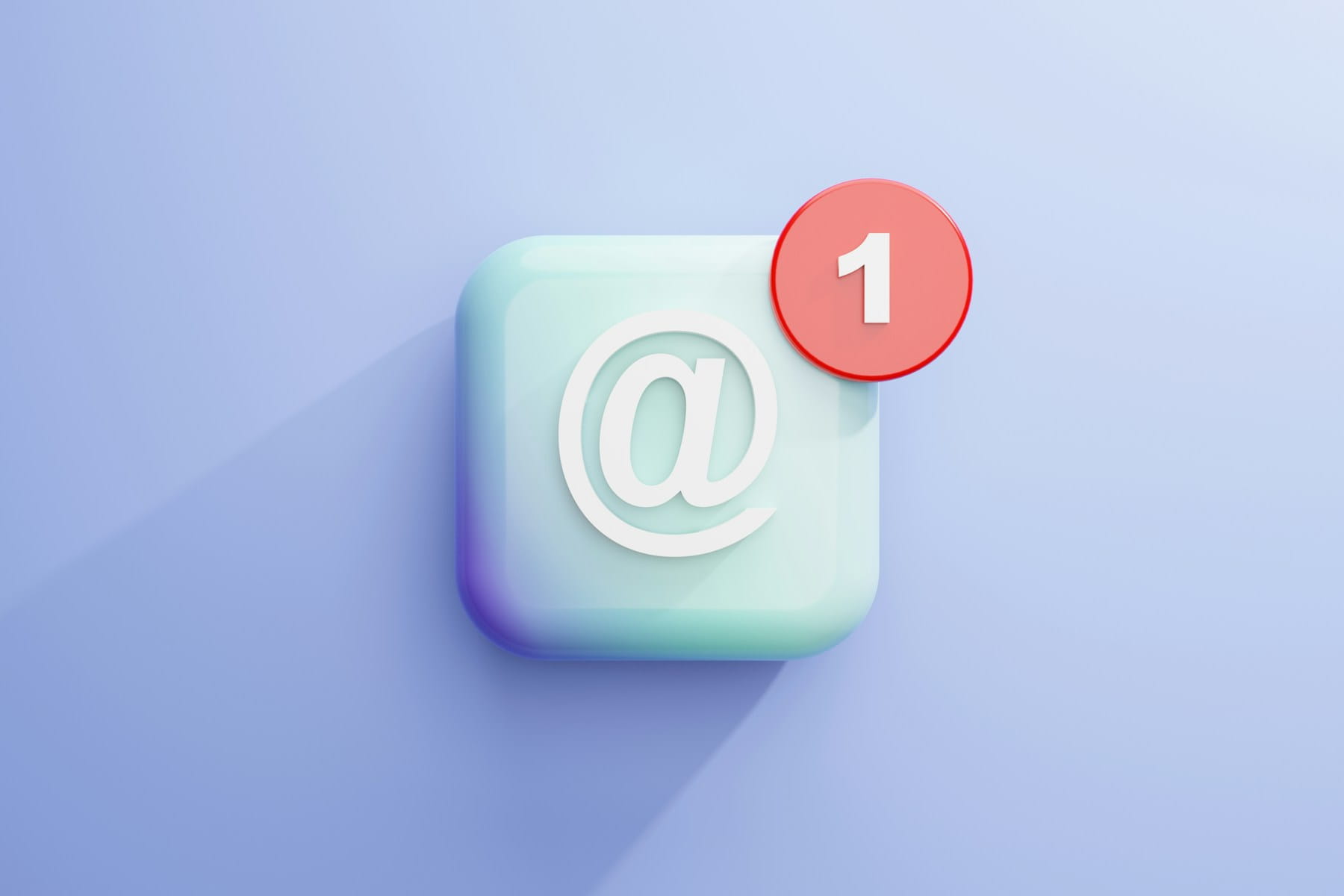Email funnels represent one of the most powerful tools in digital marketing. They're automated sequences that guide prospects through carefully crafted journeys, from initial awareness to final conversion. For a broader understanding of email marketing fundamentals, check out our guide on email marketing.
But here's the thing about email funnels – they're not just about sending emails. They're about building relationships, solving problems, and creating value at every touchpoint.
Table of contents
- What are email funnels
- Types of email funnels
- Building effective email funnel strategies
- Email funnel automation best practices
- Technical implementation requirements
- Measuring email funnel performance
- Common email funnel mistakes
- Advanced email funnel techniques
- Email funnel optimization strategies
- Choosing the right email infrastructure
What are email funnels
An email funnel is a series of automated emails that guide subscribers through a predetermined sequence. Each email serves a specific purpose in moving prospects closer to a desired action.
Think of it like a conversation with a friend who's considering a purchase. You wouldn't immediately pitch them on buying something. Instead, you'd build rapport, share relevant information, address concerns, and gradually introduce the solution.
Email funnels work similarly. They nurture relationships through strategic communication, delivering the right message at the right time. The goal is conversion, but the path involves education, trust-building, and value creation.
Core components of email funnels
Every effective email funnel contains several key elements that work together to create a cohesive experience:
Lead magnets serve as the entry point. These valuable resources – ebooks, templates, free trials, or exclusive content – entice visitors to provide their email addresses. The lead magnet must solve a real problem or fulfill a genuine need.
Welcome sequences make critical first impressions. These introductory emails set expectations, deliver promised resources, and begin building relationships. Research shows that welcome emails generate 320% more revenue per email than promotional messages.
Nurture sequences provide ongoing value. They educate subscribers about topics related to your product or service, share case studies, offer tips, and gradually introduce your solution. The key is maintaining relevance while building trust.
Conversion sequences focus on driving specific actions. These emails present clear offers, address objections, create urgency, and guide subscribers toward purchase decisions. They're more direct but still maintain the relationship-first approach.
Psychology behind email funnels
Email funnels tap into fundamental psychological principles that influence human behavior and decision-making processes.
Reciprocity plays a major role. When you provide valuable content upfront, subscribers feel obligated to reciprocate. This creates a psychological debt that makes them more likely to engage with future offers.
Social proof builds credibility. Testimonials, case studies, and user-generated content within funnel emails demonstrate that others have benefited from your solution. This reduces perceived risk and increases confidence.
Scarcity and urgency motivate action. Limited-time offers, exclusive access, or inventory constraints create psychological pressure to act quickly. But these tactics must be genuine to maintain trust.
Authority establishes expertise. Sharing industry insights, research findings, or thought leadership content positions you as a trusted advisor rather than just another vendor.
Types of email funnels
Different business objectives require different funnel approaches. Each type serves specific purposes and follows distinct structures.
Welcome funnels
Welcome funnels introduce new subscribers to your brand and establish the foundation for future communications. They typically span 3-7 emails over the first week or two.
The sequence usually starts with immediate value delivery. Send the promised lead magnet, provide access to exclusive content, or offer a special discount. This fulfills expectations and reinforces the decision to subscribe.
Subsequent emails introduce your story, share your mission, and highlight key resources. You might feature customer success stories, showcase popular products, or provide helpful tutorials. The goal is building familiarity and trust.
Lead nurture funnels
Lead nurture funnels educate prospects about problems they face and gradually introduce your solution. These longer sequences can span weeks or months, depending on the sales cycle.
Educational content dominates the early stages. Share industry insights, best practices, common mistakes, and practical tips. This positions you as a helpful resource rather than a pushy salesperson.
Case studies and success stories appear in the middle stages. These provide social proof and demonstrate real-world applications of your solution. They help prospects envision themselves achieving similar results.
Product introductions come later in the sequence. By this point, subscribers understand their problems and trust your expertise. They're more receptive to learning about your solution.
Sales funnels
Sales funnels focus specifically on driving purchase decisions. They're typically shorter and more direct than nurture sequences, often spanning 5-10 emails over 1-2 weeks.
These funnels often begin with a strong value proposition. Clearly articulate the benefits of your product or service, highlighting unique advantages over alternatives. Address the primary pain points your solution solves.
Objection handling becomes crucial. Anticipate common concerns and address them proactively. This might include pricing discussions, feature comparisons, or implementation details.
Urgency and scarcity elements appear near the end. Limited-time bonuses, expiring discounts, or exclusive access create motivation to act quickly. But these must be genuine to maintain credibility.
Re-engagement funnels
Re-engagement funnels target inactive subscribers who haven't opened or clicked emails recently. These sequences attempt to rekindle interest before removing unengaged contacts. Understanding how to prevent emails from going to spam is crucial for these campaigns.
The approach often starts with acknowledging the disconnect. Subject lines like "We miss you" or "Did we do something wrong?" can cut through inbox noise and grab attention.
Value-focused content follows. Share your best resources, highlight major updates, or offer exclusive content. Remind subscribers why they joined your list originally.
Feedback requests can provide insights. Ask directly what content they'd prefer or how you can better serve their needs. This shows you care about their experience.
Onboarding funnels
Onboarding funnels help new customers or users get started with your product or service. They're particularly important for software, courses, or complex offerings.
These sequences typically begin with setup instructions. Provide clear, step-by-step guidance for initial configuration or account setup. Include screenshots, videos, or other visual aids.
Feature introductions follow a logical progression. Start with basic functionality and gradually introduce advanced features. This prevents overwhelm while building competence.
Success milestones create momentum. Celebrate when users complete key actions or reach important benchmarks. This reinforces positive behavior and encourages continued engagement.
Building effective email funnel strategies
Successful email funnels require strategic planning and careful execution. Every element must work together to create a cohesive experience that drives results.
Audience segmentation
Effective funnels begin with deep audience understanding. Not all subscribers have identical needs, preferences, or buying behaviors. Segmentation allows you to create more targeted, relevant experiences.
Demographic segmentation considers factors like age, location, company size, or industry. A B2B software company might create different funnels for small businesses versus enterprise clients.
Behavioral segmentation tracks actions subscribers take. This includes email engagement, website visits, content downloads, or purchase history. Active subscribers might receive different sequences than inactive ones.
Psychographic segmentation examines attitudes, values, and motivations. Some prospects prioritize cost savings while others focus on premium features. Understanding these differences enables more persuasive messaging.
Journey stage segmentation recognizes that subscribers enter at different points in the buying process. New visitors need education while existing customers might want upgrade information.
Content planning and messaging
Content strategy forms the backbone of effective funnels. Each email must serve a specific purpose while contributing to the overall sequence objectives.
Value-first approach prioritizes subscriber benefits over company interests. Every email should provide useful information, solve problems, or offer insights. This builds trust and engagement.
Progressive disclosure reveals information gradually. Start with broad concepts and drill down to specific details. This prevents overwhelm while maintaining interest.
Storytelling techniques make content more engaging and memorable. Share customer success stories, behind-the-scenes glimpses, or founder journeys. Stories create emotional connections that facts alone cannot achieve.
Clear calls-to-action guide subscribers toward desired behaviors. Whether it's reading a blog post, downloading a resource, or making a purchase, every email should have one primary CTA.
Timing and frequency
Email timing significantly impacts funnel performance. Send too frequently and you risk overwhelming subscribers. Send too infrequently and you lose momentum.
Welcome sequences typically send emails 1-3 days apart. This maintains engagement during the critical first week while allowing time for content consumption.
Nurture sequences might space emails 3-7 days apart. This provides time for consideration while maintaining regular contact. The exact timing depends on your industry and sales cycle.
Sales sequences often compress timing to 1-2 days apart. This creates urgency while capitalizing on purchase intent. However, this aggressive approach requires careful balance to avoid appearing pushy.
Testing different schedules helps optimize timing for your specific audience. A/B test various intervals to identify what generates the best engagement and conversion rates.
Email funnel automation best practices
Automation transforms manual email sequences into sophisticated, responsive systems that adapt to subscriber behavior and preferences.
Trigger-based automation
Modern email funnels rely on behavioral triggers rather than simple time delays. These triggers create more relevant, timely experiences that respond to actual subscriber actions.
Website behavior triggers track visitor actions like page visits, time spent on site, or specific content consumption. Someone who spends 10 minutes reading pricing pages might receive different emails than casual browsers.
Email engagement triggers respond to subscriber interactions. Open rates, click-through rates, and reply behavior can trigger different sequence branches or timing adjustments.
Purchase behavior triggers consider transaction history and patterns. First-time buyers might enter onboarding sequences while repeat customers receive loyalty-focused content.
Demographic triggers use profile information to customize experiences. Geographic location, company size, or industry affiliation can determine which funnel variation subscribers receive.
Personalization techniques
Personalization goes far beyond inserting names into subject lines. Advanced personalization creates unique experiences based on individual preferences and behaviors.
Dynamic content adapts email elements based on subscriber data. Product recommendations, featured content, or promotional offers can change based on past behavior or stated preferences.
Behavioral adaptation modifies funnel sequences based on engagement patterns. Highly engaged subscribers might receive more frequent emails or advanced content, while less engaged contacts get simplified messages.
Contextual messaging considers external factors like seasons, events, or industry trends. A tax software company might send different messages during tax season versus summer months.
Progressive profiling gradually collects additional subscriber information through forms, surveys, or preference centers. This data enables increasingly sophisticated personalization over time.
Multi-channel integration
Email funnels work best when integrated with other marketing channels and touchpoints. This creates consistent experiences across all customer interactions.
Social media integration can trigger email sequences based on social interactions. Someone who follows your company on LinkedIn might receive different emails than website visitors.
Website integration connects email sequences with site behavior. Abandoned cart emails, browse abandonment sequences, or post-purchase follow-ups create seamless experiences.
Sales team coordination ensures email sequences complement human outreach efforts. CRM integration can pause automated sequences when sales reps make personal contact.
Customer service integration connects support interactions with email communications. Someone who submits a support ticket might receive different emails than satisfied customers.
Technical implementation requirements
Building effective email funnels requires robust technical infrastructure that can handle automation, personalization, and performance monitoring.
Email service provider selection
Choosing the right email service provider (ESP) impacts every aspect of funnel performance. Different platforms offer varying capabilities, pricing models, and integration options. Our guide on best email marketing platforms can help you make an informed decision.
Automation capabilities vary significantly between providers. Some offer basic autoresponders while others provide sophisticated workflow builders with conditional logic and complex branching. For implementation guidance, see our guide on how to send broadcast emails.
Segmentation features determine how precisely you can target different subscriber groups. Advanced platforms allow multiple criteria combinations and dynamic segment updates.
Integration options affect how well your email platform connects with other tools. CRM integration, e-commerce platforms, and analytics tools all require compatible APIs or built-in connections.
Deliverability infrastructure impacts whether your emails reach subscriber inboxes. Established providers typically have better sender reputations and stronger relationships with Internet Service Providers. Understanding DNS email records and how email spam filters work is essential for maintaining good deliverability.
Database management
Effective funnel automation requires clean, organized subscriber data. Poor data quality leads to personalization errors, delivery failures, and compliance issues.
Data collection processes must capture relevant information without creating friction. Progressive profiling and smart forms can gather data gradually while maintaining user experience.
Data validation ensures accuracy and completeness. Email verification, address validation, and duplicate detection prevent common data quality issues.
Compliance requirements vary by region and industry. GDPR, CAN-SPAM, and similar regulations require specific data handling practices and subscriber consent mechanisms.
Backup and recovery procedures protect against data loss. Regular backups, redundant storage, and disaster recovery plans ensure business continuity.
Analytics and tracking
Comprehensive tracking enables data-driven optimization and performance measurement. Without proper analytics, you're essentially flying blind.
Email metrics include open rates, click-through rates, conversion rates, and unsubscribe rates. These basic measurements provide insight into email performance and subscriber engagement.
Funnel metrics track subscriber progression through sequences. Conversion rates between stages, drop-off points, and completion rates reveal optimization opportunities.
Revenue attribution connects email activities to business outcomes. Tracking which emails generate sales, their associated values, and customer lifetime value helps calculate ROI.
A/B testing capabilities enable systematic optimization. Test subject lines, content variations, sending times, and other elements to identify what works best for your audience.
Measuring email funnel performance
Data-driven optimization requires comprehensive measurement and analysis. The right metrics provide insights needed to improve funnel performance and business outcomes.
Key performance indicators
Different metrics serve different purposes in funnel analysis. Understanding what each measurement tells you helps focus improvement efforts effectively.
Open rates measure subject line effectiveness. While not perfect due to privacy changes, they still provide insights into subscriber engagement and interest levels.
Click-through rates indicate content relevance and call-to-action effectiveness. Low CTR might suggest messaging problems or audience misalignment.
Conversion rates track desired actions like purchases, downloads, or registrations. This ultimate metric connects email activities to business objectives.
Revenue per email calculates the financial impact of funnel sequences. This metric helps justify email marketing investments and compare campaign performance.
List growth rates measure how quickly your subscriber base expands. Healthy growth indicates effective lead generation and audience interest.
Unsubscribe rates reveal content quality and frequency issues. High unsubscribe rates often signal messaging problems or audience misalignment.
Funnel analysis techniques
Analyzing funnel performance requires examining subscriber behavior throughout the entire sequence rather than individual email metrics.
Cohort analysis tracks groups of subscribers who entered funnels at the same time. This reveals performance trends and seasonal patterns while controlling for external factors.
Attribution modeling determines which touchpoints contribute most to conversions. First-touch, last-touch, and multi-touch attribution provide different perspectives on funnel effectiveness.
Drop-off analysis identifies where subscribers disengage from sequences. High drop-off rates at specific points indicate content issues or timing problems.
Segment performance comparison reveals which audience groups respond best to different approaches. This information guides segmentation strategies and personalization efforts.
Optimization strategies
Regular optimization based on performance data drives continuous improvement in funnel effectiveness and business results.
A/B testing enables systematic experimentation with different elements. Test subject lines, content formats, sending times, and calls-to-action to identify optimal approaches.
Multivariate testing examines multiple variables simultaneously. This more sophisticated approach reveals interaction effects between different elements.
Personalization testing compares personalized content against generic versions. This helps quantify the value of personalization efforts and guide future investments.
Timing optimization experiments with different send schedules and sequence intervals. Optimal timing often varies by audience segment and industry.
Common email funnel mistakes
Even experienced marketers make mistakes that undermine funnel performance. Recognizing these common pitfalls helps avoid costly errors.
Over-automation pitfalls
Automation offers tremendous benefits but can create problems when taken too far. Balance efficiency with human connection and genuine relationship building.
Robotic messaging removes personality and authenticity from communications. Subscribers can sense when emails feel automated rather than personal, reducing engagement and trust.
Ignoring subscriber feedback leads to irrelevant content and poor experiences. Automated systems must still incorporate human oversight and responsiveness to subscriber needs.
Over-segmentation creates unnecessarily complex systems that become difficult to manage. Start with broader segments and refine based on performance data and business needs.
Neglecting edge cases causes problems for subscribers who don't fit standard automation rules. Manual review processes and exception handling prevent these issues.
Content and messaging errors
Poor content quality undermines even the most sophisticated automation and segmentation strategies. Focus on providing genuine value rather than pushing products.
Selling too early damages relationships before they're established. Build trust and provide value before introducing commercial messages.
Generic messaging fails to resonate with specific audience segments. Personalization and segmentation require tailored content that speaks to unique needs and preferences.
Inconsistent tone confuses subscribers and weakens brand identity. Maintain consistent voice and messaging across all funnel communications.
Weak calls-to-action fail to guide subscribers toward desired behaviors. Clear, compelling CTAs are essential for driving engagement and conversions.
Technical implementation issues
Technical problems can derail otherwise effective funnel strategies. Proper setup, testing, and monitoring prevent these issues.
Broken automation occurs when triggers fail or sequences don't execute properly. Regular testing and monitoring catch these problems before they impact subscribers.
Data quality issues lead to personalization errors and delivery failures. Clean data collection and validation processes prevent these problems.
Deliverability problems prevent emails from reaching subscriber inboxes. Proper sender reputation management and list hygiene maintain good deliverability.
Mobile optimization failures create poor experiences for mobile users. Responsive design and mobile testing ensure emails work across all devices.
Advanced email funnel techniques
Sophisticated funnel strategies go beyond basic automation to create truly personalized, adaptive experiences that respond to individual subscriber behavior.
Dynamic content strategies
Dynamic content creates unique experiences for different subscribers within the same email. This approach scales personalization while maintaining operational efficiency.
Product recommendations based on browsing history, purchase patterns, or demographic data increase relevance and conversion rates. E-commerce companies often see significant revenue increases from personalized product suggestions.
Geolocation-based content adapts messages based on subscriber location. This might include local event information, weather-related product suggestions, or region-specific offers.
Behavioral triggers modify content based on subscriber actions. Someone who clicks on pricing information might receive different follow-up emails than those who engage with educational content.
Lifecycle stage adaptation adjusts messaging based on customer journey progression. New subscribers receive different content than long-term customers or repeat purchasers.
Behavioral email sequences
Advanced funnels respond to subscriber behavior rather than following predetermined schedules. This creates more relevant, timely experiences that drive better results.
Engagement scoring tracks subscriber interactions across multiple channels. Highly engaged subscribers might receive more frequent communications or exclusive content.
Predictive triggers use machine learning to anticipate subscriber needs. If someone's behavior suggests they're likely to churn, they might enter a retention sequence automatically.
Cross-channel behavior considers actions beyond email interactions. Website visits, social media engagement, and customer service interactions all provide valuable behavioral data.
Purchase prediction identifies subscribers most likely to buy based on behavioral patterns. These high-intent prospects can receive more aggressive sales sequences.
Machine learning integration
Artificial intelligence and machine learning increasingly power advanced email funnel optimization. These technologies enable personalization at scale and continuous improvement.
Send time optimization uses algorithms to determine optimal delivery times for individual subscribers. This can significantly improve open rates and engagement.
Content optimization automatically tests different subject lines, email formats, or call-to-action buttons to identify what works best for each subscriber.
Churn prediction identifies subscribers at risk of unsubscribing or becoming inactive. Targeted retention campaigns can prevent list attrition.
Lifetime value prediction estimates subscriber value to guide resource allocation and communication strategies. High-value prospects might receive more personalized attention.
Email funnel optimization strategies
Continuous optimization drives long-term success in email marketing. Regular testing, analysis, and refinement improve performance over time.
A/B testing methodologies
Systematic testing enables data-driven improvements rather than guesswork. Proper testing methodology ensures reliable results and actionable insights.
Single variable testing examines one element at a time. This approach provides clear cause-and-effect relationships but requires more time to test multiple variables.
Multivariate testing examines multiple elements simultaneously. This more complex approach reveals interaction effects but requires larger sample sizes for statistical significance.
Sequential testing builds on previous results to refine optimization efforts. Each test informs the next, creating a continuous improvement cycle.
Statistical significance ensures test results are reliable rather than random. Proper sample sizes and confidence levels prevent false conclusions.
Performance monitoring
Regular monitoring identifies trends, problems, and opportunities before they significantly impact results. Proactive management prevents issues and capitalizes on opportunities.
Real-time dashboards provide immediate visibility into funnel performance. Quick identification of problems enables rapid response and minimal impact.
Trend analysis reveals long-term patterns that might not be apparent in daily metrics. Seasonal variations, gradual declines, or improvement trends guide strategic decisions.
Competitive benchmarking compares your performance against industry standards. This context helps identify areas for improvement and competitive advantages.
Predictive analytics anticipate future performance based on current trends. This forward-looking approach enables proactive optimization rather than reactive fixes.
Continuous improvement processes
Systematic improvement processes ensure optimization efforts remain focused and effective. Without structured approaches, optimization becomes random and inefficient.
Regular review cycles schedule periodic analysis and optimization activities. Monthly or quarterly reviews prevent optimization from being neglected during busy periods.
Hypothesis-driven testing focuses experiments on specific theories about what drives performance. This approach generates more actionable insights than random testing.
Documentation and knowledge sharing capture lessons learned and best practices. This institutional knowledge prevents repeated mistakes and accelerates improvement.
Cross-functional collaboration brings different perspectives to optimization efforts. Marketing, sales, customer service, and product teams all contribute valuable insights.
Choosing the right email infrastructure
Email funnel success depends heavily on the underlying infrastructure that powers your communications. The right platform provides the foundation for sophisticated automation and personalization.
Platform evaluation criteria
Selecting an email service provider requires careful consideration of current needs and future growth plans. Different platforms excel in different areas.
Automation capabilities determine how sophisticated your funnels can become. Look for platforms that offer visual workflow builders, conditional logic, and complex branching options.
Segmentation features enable precise targeting and personalization. Advanced platforms allow multiple criteria combinations and dynamic segment updates based on subscriber behavior.
Integration ecosystem affects how well your email platform connects with other tools. CRM systems, e-commerce platforms, and analytics tools all require compatible APIs or built-in connections.
Scalability options ensure your platform can grow with your business. Consider subscriber limits, email volume restrictions, and performance under heavy load.
Deliverability infrastructure impacts whether your emails reach subscriber inboxes. Established providers typically have better sender reputations and stronger ISP relationships.
Infrastructure considerations
Beyond platform features, infrastructure decisions affect long-term flexibility and cost efficiency. Consider both immediate needs and future requirements.
Self-hosted solutions provide maximum control and customization but require technical expertise and ongoing maintenance. These options work well for large organizations with dedicated IT resources.
Managed cloud services balance control with convenience. They offer more flexibility than traditional SaaS platforms while reducing infrastructure management burden.
Hybrid approaches combine multiple delivery methods for optimal performance and cost efficiency. You might use different providers for different email types or volume levels.
Compliance requirements vary by industry and region. Ensure your chosen infrastructure meets relevant data protection, privacy, and security standards.
The right email infrastructure forms the foundation of successful funnel strategies. Whether you choose traditional SaaS platforms, self-hosted solutions, or hybrid approaches, the key is matching capabilities to your specific needs and growth plans.
For organizations seeking maximum flexibility and cost efficiency, SelfMailKit offers a compelling alternative to traditional email service providers. This platform allows you to self-host, use managed cloud services, or connect your own AWS SES account to send reliable transactional emails at scale. The flexibility to choose your deployment model while maintaining full control over your email infrastructure makes SelfMailKit an ideal choice for businesses that want to optimize their email funnels without vendor lock-in or escalating costs.
Email funnels represent a powerful tool for building relationships and driving conversions. Success requires strategic planning, quality content, proper implementation, and continuous optimization. By following the principles and practices outlined in this article, you can create email funnels that deliver real business value while providing genuine value to your subscribers.






